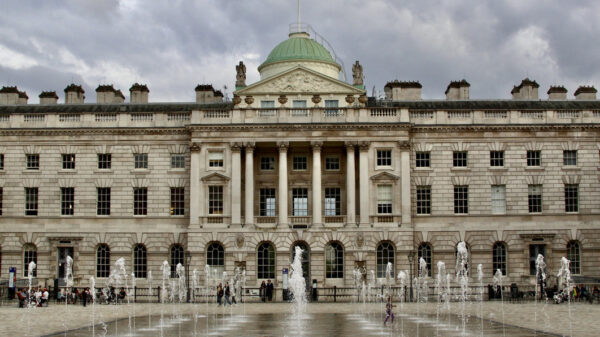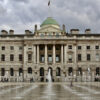Staff writer Mina Yasar discusses must-see architectural landmarks of London.
I believe that one of the components that makes a city special is it’s cultural heritage. Culture is something changes and evolves with time, and architectural masterpieces of cities are components of that tangible heritage and culture around us. London is a city which contains modern and historical buildings and we are very lucky to have that. Let’s look at to the some of the interesting architectural masterpieces of London.
The Banqueting House
The Banqueting House is one of the architectural landmarks of London. It is also home for a Rubens’ ceiling – the oil painting of the artist Rubens could be seen in the ceiling of the Banqueting House. Peter Paul Rubens is a famous painter born in Germany in 1577; he was interested in Renaissance paintings and went Italy to see those artworks in person. The ceiling from The Banqueting House shows his interest in Renaissance art. Banqueting House is also the only surviving complete building of Whitehall Palace.
2022 was the historical building’s 400th year and it is important not only for architectural history but also for historical events, as it was also home to some positive and negative events in the history. Most of the Whitehall palace was burned in the 17th century; I think we are very lucky to have The Banqueting House now for understanding the magnificence of the buildings in WhiteHall Palace. The designer of The Banqueting House was Inigo Jones, an English architect, designer and artist. He was also known as “the father of the English Palladian style”.
In The Banqueting House, if we look at the building in a detailed way, we see the correct use of proportions and mathematical calculations that are present in the Renaissance style since those proportions were significant in ancient Roman and ancient Greek cultures. Some of the columns are also designed in Ionic and Corinthian style – essential components of a Renaissance building which one see in Italy. I think these could show us the effect of Renaissance architecture on Jones and the building itself.
Lloyd’s Building
If you are interested in architectural history, you have probably heard the name Richard Rogers. Rogers designed Lloyd’s building, which has a rectangular core and a central atrium. Rogers is Italian-British architect who was born in 1933, he was one of the architects of the famous Pompidou Centre in Paris, European Court of Human Rights in Strasbourg. The building was opened by Her Majesty The Queen in 1986. I think it is one of the modern landmarks of London and you should visit it.
Westminster Cathedral
I remember the first time I saw this building, I said to myself, “It is amazing.” I loved it at first sight and immediately tried to find the architect of the building because I wanted to see more buildings of this designer. Westminster Cathedral, one of the largest cathedrals in the UK, is located in Francis Street in Westminster. John Francis Bentley is the architect of this cathedral. Bentley is an architect influenced by Byzantine Architecture. You could visit this cathedral with the help of a virtual tour on its website or you could watch a video tour. On the virtual tour, it is possible to see the narthex, the nave, the sanctuary mosaics and many more. The combination of Christian and Byzantine architecture makes the building very impressive. The construction of the Westminster Cathedral started in 1895, and it was completed in 1903. The mosaic around in the cathedral’s main doors are one of the essential parts of that building. The interior of the cathedral was decorated with different marbles. If you have time, you should absolutely see the mosaics in the building because I think the building is a place where present and past meets. It is not a very old building in terms of its construction date but the way the architect designed it makes us feel like the building is older than it is. I think what makes this building essential is the way it represents different architectural styles at the same time.
The Somerset House
As stated in the website of Somerset House, its history starts in 1547 as Edward Seymour, Duke of Somerset, started building a palace for himself. In 1553, Princess Elizabeth moved here. The Treaty of London also was signed in Somerset House. In 1609, Inigo Jones and some other architects started designing some parts of the building. One of the important historical events about this building is that The Royal Academy of Arts was also resident, and the first Royal Academy exhibition happened in Somerset House. In 1989, The Courtauld Institute moved there and today, Somerset House is home to many cultural events.
If you have time you should also see the Royal Albert Hall, Westminster Abbey, Victoria and Albert Museum, Tate Modern, Hayward Gallery and The Wilkins Building.


















